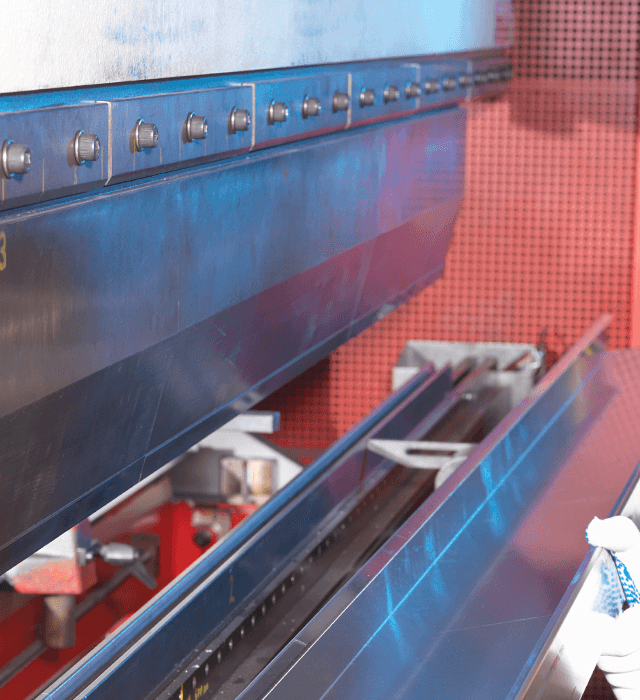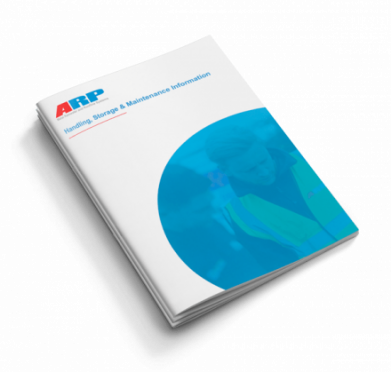Handling
Handling mill finish or painted aluminium products and primed cast iron products does not pose any known health hazard. However, it is recommended to wear protective gloves whilst handling uncoated material.
When cutting or welding these products, it is advisable to wear eye protection. Avoid ingestion or inhalation of any dust or fumes arising from such operations and use a face mask when necessary.
Storage
Gutters, downpipes and fittings, particularly with polyester powder coat finish, should be handled with care and should preferably be stored under cover on racks to prevent scratching.
All lengths are supplied in protective polythene wrapping with components suitably packed in boxes.
If coated products are to be stored outside, it is important they are stored under cover and out of direct sunlight to guard against “blanching”. This can occur when the product is exposed to rain and then strong sunshine. The humidity levels and temperature within the polythene wrapping can be very high and any moisture, condensation or plasticisers from the wrapping could leach into the coating. The marks can sometimes be removed or minimised by rubbing or polishing or through the gentle heating of the surface e.g. with a heat gun, however, great care should be taken as excessive heat could damage the surface.
Mill finish items should be stored undercover to avoid uneven oxidisation prior to being fitted.
Method of Jointing and Fixing
To be completed as per ARP’s installation instructions (Copies of which are downloadable via our download centre) with fixings suitable for both the weight of the product and substrate.
Austenitic or Stainless Steel is the recommended material of use. All joints to be sealed (with Arbosil 1096 or 3723 Low Modulus Sealant if applicable), ensuring a 3mm gap is left to accommodate thermal movement.
Fixings
It is essential that the condition of the wall is adequate to take suitable fixings. Due to the various substrates and conditions in use, ARP does not supply fixings.
The minimum recommended fixings for aluminium systems are 5mm x 50mm (dependent on substrate) stainless steel screws, in accordance with the manufacturer’s specification & guidelines.
Downpipes should be fixed according to ARP’s installation guidelines (2m centres maximum), which can be found at in our download centre.
Cleaning
The following instructions are key to retaining the decorative and functional lifetime of the product and it should be noted that there may be additional local regulations or local requirements to be met in order to achieve conformance to certain published quality labels or standards. It is the users’ responsibility to be aware of such standards.
An effective and robust cleaning programme should be established and suitable records should be kept as detailed below. For information, we have also tabled the recommended frequencies that cleaning should be completed based on the climate that the site enjoys and the distance from any coastal or industrial environments.
Maintenance
With the finished powder costing, all breakage to the film should be repaired within 24 hours (touch-up paint provided by ARP on delivery of consignment and on request). Further, there must be no bare metal edges, with all mitres, cut edges and drilled holes to be sealed and repainted.
With all cast iron rainwater systems, any exposed metal should be treated with an appropriate primer and top coat ASAP to stop corrosion and rust appearing.
Durability
ARP qualifies that when installed correctly and maintained in accordance with its product guidelines and O&M procedure, its products are designed to give an effective functional life expectancy of at least 30 years.
The following information gives details of the processes that should be put in place to maintain the product’s decorative finish and it is recommended that the design of the structure should be such as to facilitate easy run-off of liquid materials and the avoidance of all water traps. This will ensure there is no build-up of concentrated contamination and prevent corrosion cells from forming.
Download a PDF copy
Download a PDF copy of our Handling, Storage and Maintenance information. Click the image below, or go to our Download Centre.
-
- Records of all cleaning schedules and frequencies, including dates, names of operatives and the agents used, should be kept and maintained and be made available if requested, as failure to comply with the recommended cleaning schedule will nullify any paint warranties.
-
- All construction materials such as concrete, plaster and paint splashes should be removed before they have a chance to dry.
-
- The recommended method of cleaning the paint surface is by regular washing using a solution of warm water and a non-abrasive, pH-neutral detergent. Surfaces should be thoroughly rinsed with water to remove all residues. Surfaces should be cleaned with a soft cloth or sponge and nothing harsher than a soft bristle brush.
- If the project is subject to airborne debris e.g. sand/dust, is in a sheltered area or has a change in environmental conditions, then cleaning may be required on a more regular basis.
| Environment | Distance from Coastline/Pollution | Cleaning Frequency |
|---|---|---|
| Normal – C3 Inland | Greater than 5km | 12 months |
| Phone | Between 2km and 5km | 12 months |
| Between 500m and 2km | 6 months | |
| Between 50m and 500m | 3 months | |
| Less than 50m | Contact ARP for advice | |
| Industrial – C5I | Between 2km and 5km | 12 months |
| Between 500m and 2km | 6 months | |
| Between 50m and 500m | 3 months | |
| Less than 50m | Contact ARP for advice | |
| Swimming Pool | Greater than 2m from edge of pool | 3 months |
| 2m from edge of pool | Contact ARP for advice |


